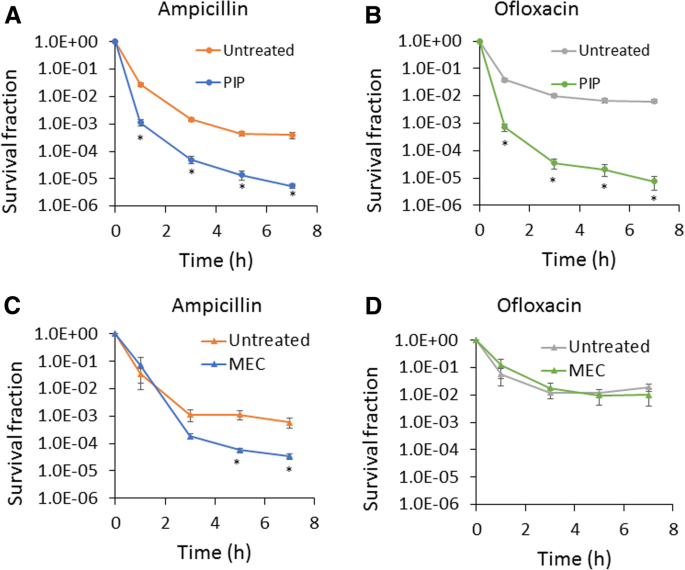
Setting and revising antibacterial susceptibility breakpoints. Bacterial cytological profiling rapidly identifies the cellular pathways targeted by antibacterial molecules. OP0595, a new diazabicyclooctane: mode of action as a serine β-lactamase inhibitor, antibiotic and β-lactam ‘enhancer’. Kinship and diversification of bacterial penicillin-binding proteins and β-lactamases. Kinetics of avibactam inhibition against class A, C, and D β-lactamases. Preparation of oxodiazabicyclooctenyl hydrogen sulfate derivatives for use as beta-lactamase inhibitors. ESKAPEing the labyrinth of antibacterial discovery. Crystal structure of the carbapenemase OXA-24 reveals insights into the mechanism of carbapenem hydrolysis. Class D β-lactamases: a reappraisal after five decades. In vitro and in vivo activities of the diazabicyclooctane OP0595 against AmpC-derepressed Pseudomonas aeruginosa. Structural and kinetic characterization of diazabicyclooctanes as dual inhibitors of both serine-β-lactamases and penicillin-binding proteins. Emerging broad-spectrum resistance in Pseudomonas aeruginosa and Acinetobacter baumannii: mechanisms and epidemiology. Multidrug-resistant, extensively drug-resistant and pandrug-resistant bacteria: an international expert proposal for interim standard definitions for acquired resistance.
Pbp3 bocillin update#
Bad bugs, no drugs: no ESKAPE! An update from the Infectious Diseases Society of America. Molecular basis of selective inhibition and slow reversibility of avibactam against class D carbapenemases: a structure-guided study of OXA-24 and OXA-48. Diversity, epidemiology, and genetics of class D beta-lactamases. New β-lactamase inhibitors in the clinic. β-Lactams and β-lactamase inhibitors: an overview.

Diazabicyclooctanes (DBOs): a potent new class of non-β-lactam β-lactamase inhibitors.


Updated functional classification of β-lactamases. However, neither avibactam nor any of these new BLIs in late-stage development are effective against Acinetobacter baumannii infections, due in part to the wide variety of class D β-lactamases expressed by this organism 5, 6. This combination is a welcome addition to hospital formularies to combat bacteria that produce extended-spectrum β-lactamases (ESBLs), including some (but not all) strains of Pseudomonas aeruginosa. Avibactam has recently been approved for use in combination with ceftazidime for the treatment of serious Gram-negative infections 4. Avibactam, a novel diazabicyclooctanone (DBO) BLI 2 and other non-β-lactam BLIs currently in late-stage development (relebactam, vaborbactam) inhibit many clinically relevant class A and C β-lactamases, as well as a limited number of class D enzymes such as OXA-48 (ref. Traditional β-lactamase inhibitors (BLIs) (clavulanic acid, sulbactam and tazobactam) are only active against some class A β-lactamases 1. Classes A, C and D enzymes use an active site serine for β-lactam hydrolysis, whereas class B consists of metalloenzymes that require divalent zinc ions for activity 1. These enzymes, which hydrolyse β-lactam antibiotics, are classified into four Ambler classes (A–D) based on amino-acid sequence relationships.
Pbp3 bocillin drivers#
The production of β-lactamases by Gram-negative bacteria is among the most important drivers of the antibiotic resistance that currently threatens modern medicine. baumannii infections and promising preclinical safety demonstrate its potential to address this significant unmet medical need. One of the most promising combinations is sulbactam–ETX2514, whose potent antibacterial activity, in vivo efficacy against MDR A. This report describes the rational design and characterization of expanded-spectrum serine β-lactamase inhibitors that potently inhibit clinically relevant class A, C and D β-lactamases and penicillin-binding proteins, resulting in intrinsic antibacterial activity against Enterobacteriaceae and restoration of β-lactam activity in a broad range of MDR Gram-negative pathogens. Although several new β-lactamase inhibitors have been approved or are in clinical trials, their spectra of activity do not address MDR pathogens such as Acinetobacter baumannii. Among the most alarming resistance trends is the rapid rise in the number and diversity of β-lactamases, enzymes that inactivate β-lactams, a class of antibiotics that has been a therapeutic mainstay for decades. Multidrug-resistant (MDR) bacterial infections are a serious threat to public health.


 0 kommentar(er)
0 kommentar(er)
